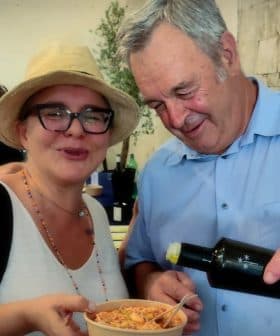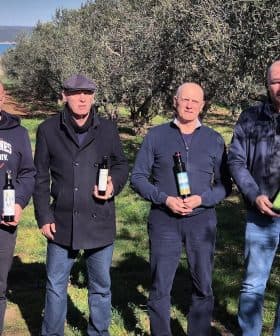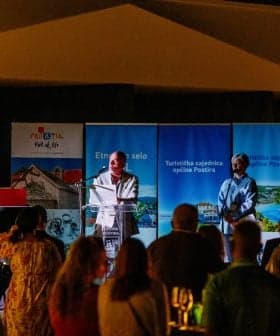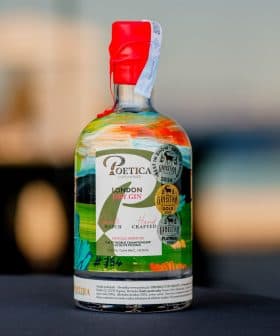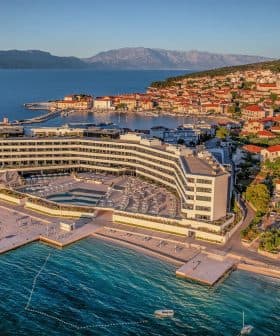Croatia's Harvest Bests Pests
Croatia's ever-optimistic olive farmers held the 12th annual "Days of Young Olive Oil" festival in the Istrian town of Vodnjan to celebrate a bountiful harvest undeterred by pests plaguing the country's other regions.
Croatia’s olive farmers in Istria celebrated a successful harvest at the “Days of Young Olive Oil” festival despite challenges from pests, with some estimating a 6,000-ton crop nationwide. The festival in Vodnjan featured olive oil tastings, expert advice, and a “gastro show” showcasing dishes made with young olive oil, while local producers in other regions faced difficulties due to olive flies and moths.
Croatia’s ever-optimistic olive farmers held the 12th annual “Days of Young Olive Oil” festival in the Istrian town of Vodnjan last weekend, celebrating a bountiful harvest undeterred by pests plaguing some regions.
The three-day gathering let consumers and producers unwind while taking early stock of the year’s crop.
I wouldn’t say it’s a record year, but it’s obviously good.
“The main challenges this year were dry periods during the summer and the emergence of the olive fruit fly,” said Bernardina Hlevjan Pastrovicchio, agronomist for the local “Agroturist” Association of Vodnjan, in an email interview. “We readily anticipated [both].”
See Also:Complete Coverage of the 2016 Olive Harvest
Other agronomists told local daily Jutarnji List olive totals across Croatia will top last year’s, with some estimating a 6,000-tons of fruit picked nationwide. If accurate, the figure would nearly double last year’s 3,500-ton crop.

Pastrovicchio, who often meets with the association’s 350-plus members, expects about 500 tons of healthy oil.
“Olive farmers can only truly relax when the harvest is at the mill,” she added.
Vodnjan hopes to become the epicenter of Istria’s budding agricultural industry, going beyond oil to include aromatic herbs and local produce.
Organizers of the festival claim it has helped drive an oil revival in the town: the number of planted and active olive trees has quadrupled over the last decade.
Bands regaled experienced hands and curious locals at the festival. An “oil bar” manned by a connoisseur peddled samples of fresh-pressed oil. Agronomists and experts doled out advice to novices and longtime farmers alike. Chefs made young olive oil-dependent dishes, from surf to turf to veggies, in a fully-functioning kitchen as part of a three-day “gastro show.”
Croatia’s overall harvest comes after spring rains and frost during the olive pollination period made some farmers nervous. Their expectations were further dashed by an unexpected onslaught of olive flies and moths.
But locals in Vodnjan claim fortune rewarded those who prepared.
“Yields, among other things, depend on the attack of pests and diseases,” Pastrovicchio said. “We have a lot of organic olive groves, and nothing is left to chance.”
Agrolaguna, an olive oil producer based in the Istrian town of Poreč, told local newspapers a high yield of 12 percent allowed it to lower the price of its young olive oil from 99 to 85 Croatian kunas per liter (about $12) without a drop in quality.

Head of Operations Katja Gašparini told local daily Glas Istre the company expected a 1.3 million-kilogram harvest by the end of the year.
“I wouldn’t say it’s a record year, but it’s obviously good,” she told the paper.
The surprising harvest caused a logjam outside Agrolaguna’s mill, as smaller producers and private citizens waited longer than expected to press their olives, Gašparini added.
While the Istrian peninsula wallowed in unexpected lucre, efforts to build up the Kvarner gulf’s oil production finally paid off.
Comprised of the coastal wedge to Istria’s east, it includes towns lining the coast as well as the islands of Krk, Cres and Rab, among others.
“It’s not even important if we break any records this year,” Mateo Ferarić, director of the agricultural cooperative on Cres, told Glas Istre. After several barren years, the coop’s harvest jumped to 600 tons this year despite an ongoing battle with flies and moths.
Krk also experienced a bumper crop almost matching its 1,800-ton record. Earlier this year, the European Union granted the island’s olive oil PDO (Protected Designation of Origin) status.
Other parts of the Adriatic had fewer reasons to celebrate. Olive flies and moths forced unprepared farmers along the Dalmatian coast to start picking early.
“Everyone who treated their trees against flies and moths had a good harvest,” Ivica Ljubenkov, president of the Association of Croatian Olive Oil Producers told Jutarnji List.
Still, local producers continue to lament paltry demand for olive oil at home. Croats, on average, consume only two liters of olive oil per capita.
The number seems downright stingy compared to other Mediterranean producers: Italians consume 12 liters, while Spaniards and Greeks down 20 liters per person, according to Agrolaguna’s Gašparini. Low consumption in Croatian regions that do not produce olive oil drags the figure down, she added.
The lackluster demand, as well as a trade deficit flooding local markets with oils from bigger EU-based producers, has stunted the industry’s growth within Croatia.
Pastrovicchio sees a bigger deterrent ahead.
“Croatia needs to speed up the disposal of state-owned agricultural land, either by selling or leasing it, because the process has slowed in recent years,” she said, referring to leftover government-owned rural land which is not leased or sold to local farmers.


